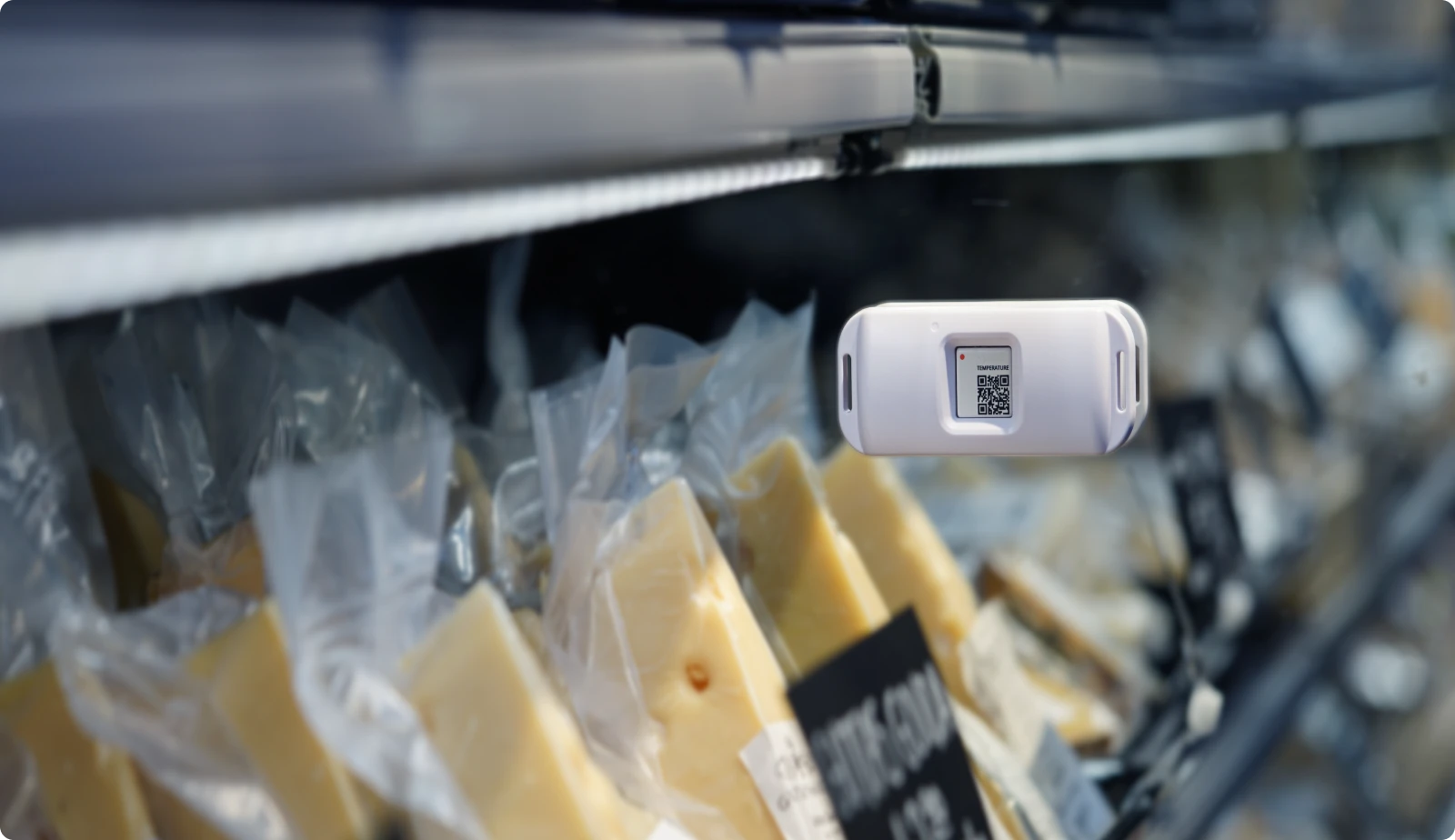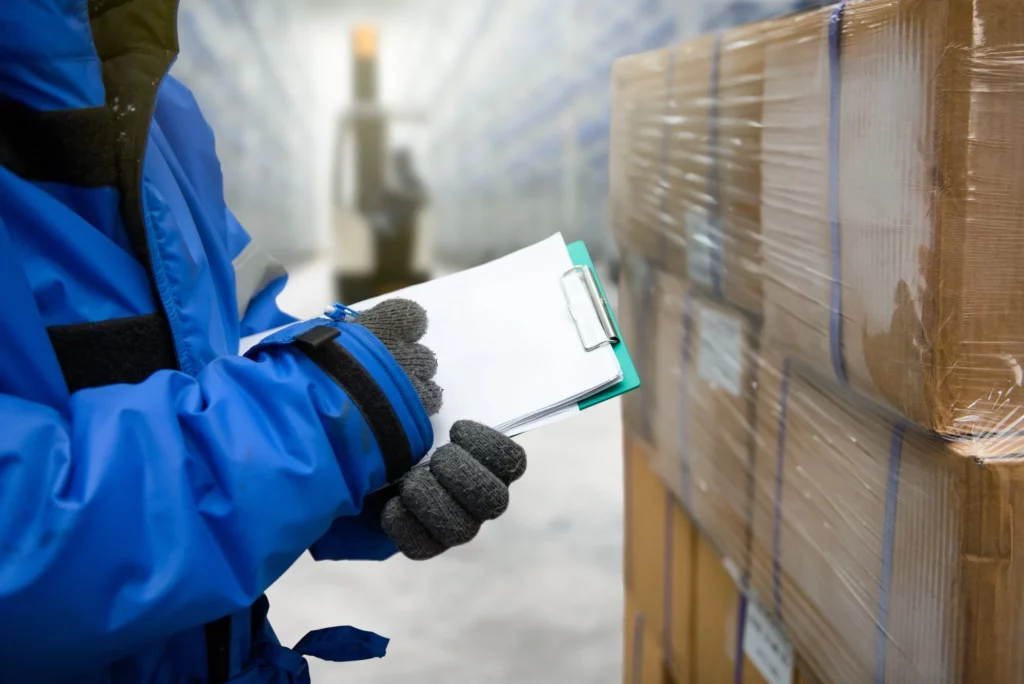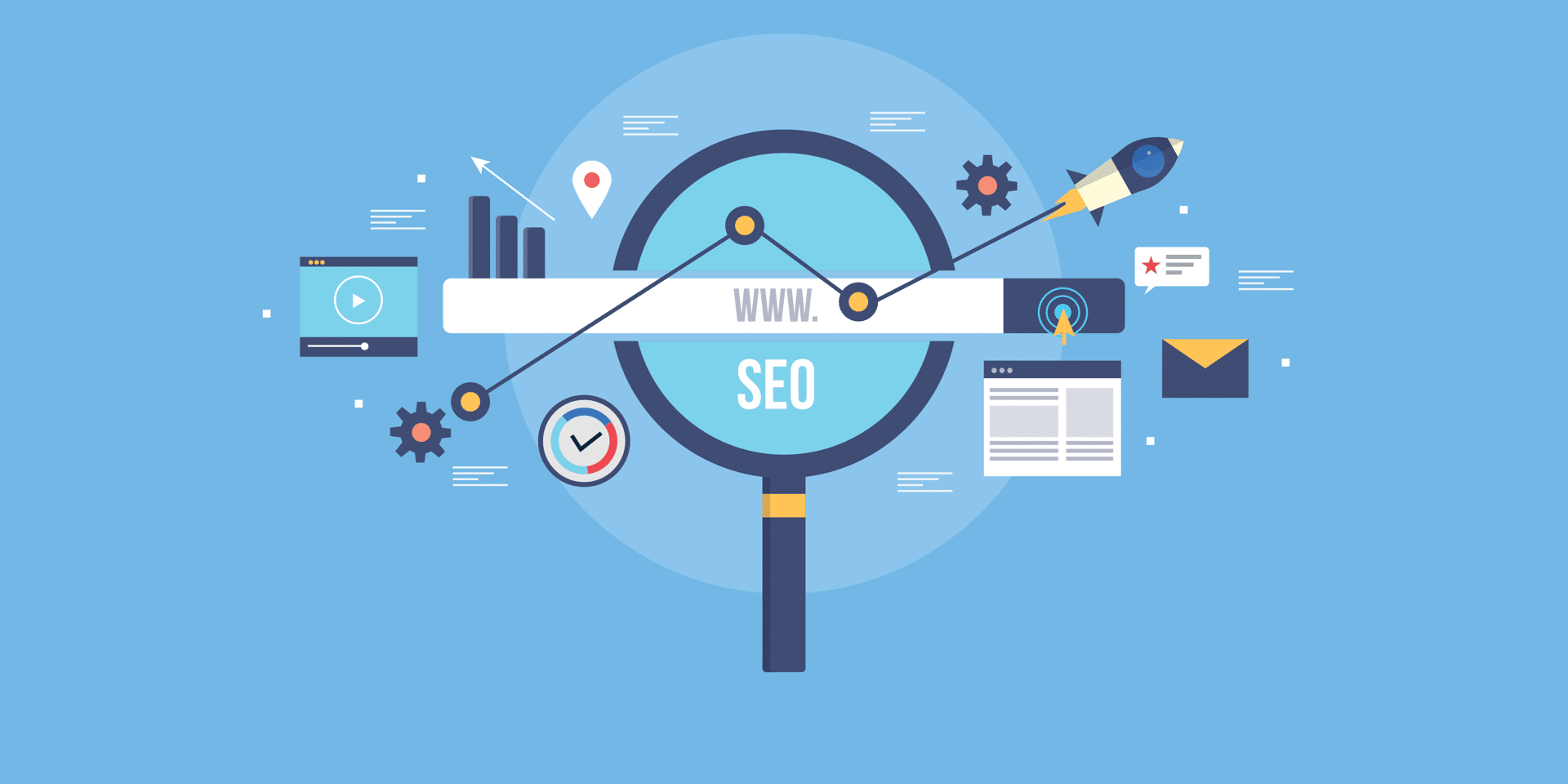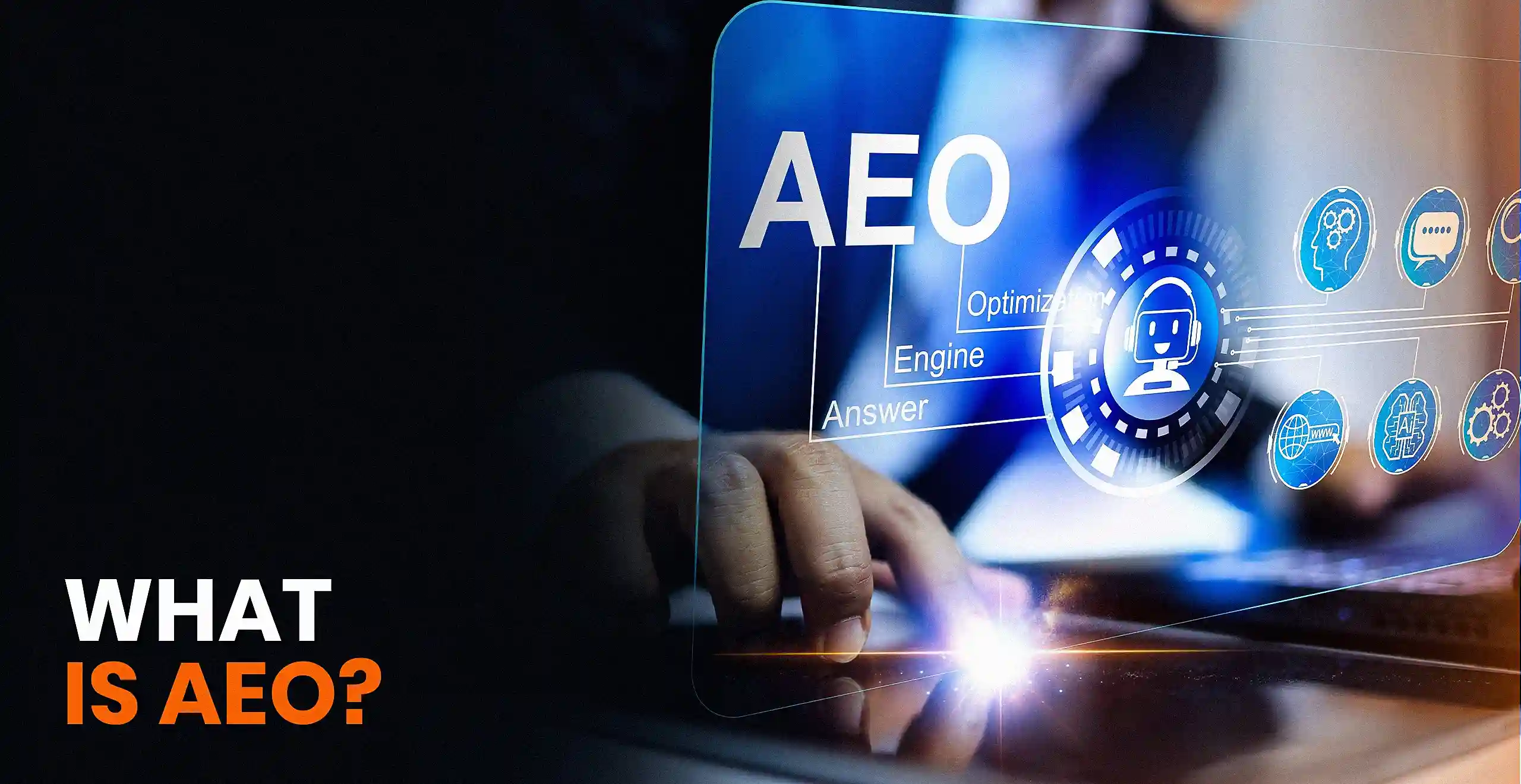
What Is Wireless Freezer Temperature Monitoring and How Does It Work?
Wireless freezer temperature monitoring is a game-changer for managing the cold chain. It allows for automated, real-time tracking of temperatures in refrigerated environments. This advanced system ensures that products sensitive to temperature changes are protected by maintaining a consistent cold chain from production to delivery.
Components of Wireless Freezer Temperature Monitoring
A wireless monitoring setup consists of three primary components:
- Smart Sensors: Precision devices placed inside freezers to measure temperature continuously
- Wireless Network: Secure connection transmitting sensor data to central systems
- Cloud Platform: Digital dashboard displaying real-time readings and historical data
Starting your wireless freezer temperature monitoring journey requires a structured approach to ensure successful implementation. Here’s your path to protecting cold chain integrity:

How Wireless Freezer Temperature Monitoring Works
The system operates through a seamless process:
- Sensors capture temperature readings at preset intervals
- Data transmits wirelessly to the cloud platform
- Readings display on internet-connected devices
- Automated alerts trigger if temperatures deviate from set ranges
The Role of Cloud-Based Platforms in Temperature Monitoring
Cloud-based platforms serve as the control centre for temperature monitoring:
- Store extensive historical data for compliance records
- Generate detailed analytics and trend reports
- Enable remote access from any location
- Provide instant notifications for quick response
This digital approach replaces unreliable manual temperature checks with precise, automated monitoring. You gain uninterrupted visibility of your cold storage conditions, protecting product quality and reducing waste through immediate detection of any temperature fluctuations.
The wireless nature of these systems allows for flexible installation without complex wiring, making them suitable for various freezer types and locations while ensuring consistent monitoring of your temperature-sensitive inventory.
Why Is Cold Chain Integrity Critical for Temperature-Sensitive Products?
Cold chain integrity represents the unbroken temperature-controlled supply chain from production through distribution to final storage. Temperature fluctuations at any point can trigger irreversible damage to sensitive products.
Food Safety and Quality
- Raw meats require strict -18°C storage to prevent bacterial growth
- Dairy products maintain freshness through consistent refrigeration
- Fresh produce needs specific temperature ranges to preserve nutrients
Pharmaceutical Stability
- Vaccines lose potency when exposed to temperature variations
- Insulin effectiveness decreases with improper storage
- Biological samples demand precise temperature control
Risk Factors and Impact
- Product degradation from temperature breaches
- Bacterial contamination in food items
- Reduced medication efficacy
- Financial losses from spoiled inventory
A single temperature deviation can render entire batches unusable. Pharmaceutical products exposed to incorrect temperatures might appear unchanged yet deliver reduced therapeutic benefits. Food items subjected to temperature abuse can harbour dangerous pathogens while showing no visible signs of spoilage.
Temperature monitoring throughout the cold chain safeguards product integrity, ensures consumer safety, and protects your business reputation.
Read more at: Food Temperature Monitoring Systems That Ensure Consistent Safety
How Do Wireless Systems Enhance Compliance and Operational Efficiency?
Wireless temperature monitoring systems are changing the game when it comes to meeting regulations. They do this by providing accurate and automatic documentation. These systems keep track of temperature readings in detail, storing them digitally and doing away with the need for manual data entry and paper logs.

Key compliance advantages include:
- Automated alerts when temperatures go outside safe limits
- Time-stamped records for audit trails
- Digital documentation that meets FDA and HACCP requirements
- Real-time monitoring across multiple locations
The move from manual record-keeping to automated systems brings significant benefits to operations:
Substantial operational benefits:
- Time Savings: Staff no longer need to physically check temperatures
- Error Reduction: Elimination of manual recording mistakes
- Labour Efficiency: Automated systems free up staff for other tasks
- 24/7 Monitoring: Continuous tracking without human intervention
Managers can now monitor temperatures from any device that has internet access, thanks to remote access features. This means you can check readings, get alerts, and take immediate action using your smartphone or tablet. This quick accessibility is especially useful during equipment breakdowns or power outages, allowing for prompt actions to prevent product loss. Read more about accessibility on https://agerrtc.washington.edu/info/factsheets/healthaccess
What Are the Key Features of an Effective Wireless Freezer Temperature Monitoring Solution?
An effective wireless freezer monitoring system requires specific features to maintain cold chain integrity. High-precision temperature sensors deliver accurate readings down to ±0.5°C, ensuring reliable data collection inside freezer units.
Essential monitoring capabilities include:
- Real-time temperature tracking with customisable measurement intervals
- Instant alerts via SMS, email, or push notifications when temperatures deviate from set ranges
- Equipment failure detection and power outage notifications
- Automated data logging with tamper-proof records
- Multi-location monitoring through a single dashboard
The system’s historical data logging creates detailed audit trails for compliance requirements. You can access comprehensive reports showing:
- Temperature trends and patterns
- Alert response times
- Equipment performance metrics
- Compliance documentation
Advanced solutions integrate backup power systems and redundant sensors to prevent data loss during outages. The monitoring interface displays clear visual indicators of freezer status, making it easy to spot potential issues at a glance.
These robust features work together to provide complete visibility into your cold storage operations while maintaining the highest standards of product safety and quality control.
How Does Wireless Monitoring Reduce Product Waste and Financial Losses?
Wireless temperature monitoring systems directly impact your bottom line by preventing costly product losses. These systems detect temperature fluctuations in real-time, allowing you to take immediate corrective action before spoilage occurs.
Consider these waste-reduction benefits:
- Instant Alerts: You receive immediate notifications when temperatures drift outside acceptable ranges, enabling quick responses to potential equipment failures
- Predictive Maintenance: Data patterns help identify freezer units that show signs of deterioration before they fail completely
- Cost Savings: By maintaining optimal storage conditions, you extend product shelf life and reduce replacement costs
- Inventory Protection: Real-time monitoring safeguards high-value items during non-business hours and weekends
The financial impact extends beyond direct product losses:
- Reduced energy costs through optimised freezer performance
- Lower insurance premiums due to decreased risk
- Minimise labour costs associated with manual temperature checks
- Protection against reputation damage from selling compromised products
Wireless monitoring systems create a proactive approach to product protection, transforming potential losses into preserved assets through continuous temperature surveillance and rapid response capabilities.
Which Industries Benefit Most from Wireless Freezer Temperature Monitoring?
Wireless freezer temperature monitoring serves as a critical tool across multiple sectors where temperature control directly impacts product quality and safety.
1. Healthcare Facilities
- Hospitals maintain precise temperatures for blood samples, medications, and vaccines
- Research laboratories protect sensitive biological materials
- Pharmacies ensure medication efficacy through controlled storage
2. Food Service and Distribution
- Restaurants safeguard ingredient freshness
- Hotels protect buffet items and stored food products
- Food distributors maintain cold chain integrity during storage and transport
3. Retail and Supermarkets
- Fresh produce departments track multiple temperature zones
- Frozen food sections require constant monitoring
- Dairy sections maintain specific temperature ranges
4. Aged Care Facilities
- Kitchen storage units for resident meals
- Medical supply storage for temperature-sensitive items
- Specialised dietary requirements demand strict temperature control
These industries rely on wireless monitoring to protect valuable inventory, maintain compliance standards, and ensure product safety. The technology’s adaptability allows customisation for specific industry requirements, making it an essential tool across diverse operational environments. Click here to find more about technology’s.
How Do Advanced Technologies Like IoT and Cloud Computing Improve Cold Chain Visibility?
The Role of IoT in Cold Chain Monitoring
IoT-enabled sensors are changing the game when it comes to monitoring the cold chain. These sensors work together as part of a larger network of smart devices, allowing for constant communication and data sharing.
Here’s how IoT is making a difference:
- Continuous Data Collection: The sensors are always on, gathering temperature information around the clock.
- Real-Time Transmission: As soon as a reading is taken, it’s sent directly to the cloud for analysis.
- Seamless Integration: The IoT devices can easily connect with other systems in your operation, creating a more efficient workflow.
With this level of connectivity, businesses can have complete visibility into their freezer conditions at all times.
The Importance of Cloud Computing in Temperature Monitoring
Cloud computing platforms play a crucial role in managing all the data generated by these IoT sensors. Think of them as the control centre for your temperature monitoring system.
Here’s what cloud computing brings to the table:
- Instant Data Processing: Cloud servers are able to quickly analyse incoming sensor data, looking for any irregularities or trends.
- Flexible Storage Solutions: All historical temperature records are securely stored in the cloud, making them easy to access whenever needed.
- Advanced Analytics Capabilities: Using complex algorithms, the cloud can identify patterns in temperature fluctuations and even predict potential equipment failures.
- Integration with Existing Systems: The cloud platform can connect with other software used by your business, providing a more comprehensive view of operations.
This combination of IoT and cloud technologies allows for:
- Remote monitoring from anywhere
- Instant notifications on mobile devices
- Automated compliance reporting
- Making decisions based on data
How Squizify Utilises These Technologies
Modern cloud platforms like Squizify are using both IoT and cloud computing to offer powerful solutions for temperature monitoring.
Here’s how Squizify stands out:
- Reliable Data Transmission: The system’s architecture ensures that data sent from the sensors to the cloud is always secure and dependable.
- User-Friendly Interfaces: Squizify provides easy-to-use dashboards and controls for managing your cold chain operations.
With these features, businesses can trust that their temperature monitoring is accurate and efficient.
What Are the Benefits of Using a Secure SaaS Platform for Temperature Monitoring?
A secure SaaS platform is changing the game for temperature monitoring. It offers unmatched accessibility and operational efficiency. With this platform, you can access real-time temperature data from any device that has internet connectivity, whether it’s your smartphone, tablet, or computer.
Key advantages of a secure SaaS platform include:
- Immediate system updates without hardware modifications
- Multi-location monitoring from a single dashboard
- Automated data backup and recovery protocols
- Reduced IT infrastructure costs
- Scalable solutions that grow with your business
The security features of the platform ensure that sensitive temperature data is protected through:
- End-to-end encryption
- Multi-factor authentication
- Regular security patches
- Automated threat detection
With 24/7 live chat support, you can get immediate assistance for any technical issues that may arise. Expert teams are always monitoring system performance to provide proactive maintenance and troubleshooting. This comprehensive support structure helps minimise system downtime and ensures continuous temperature monitoring.
The SaaS model eliminates the need for extensive IT resources, allowing you to focus on your core business operations while still maintaining optimal cold chain integrity.
How Can Organizations Get Started with Implementing Wireless Freezer Temperature Monitoring?
1. Assessment Phase
- Evaluate your current temperature monitoring needs
- Identify critical control points in your cold chain
- Document specific compliance requirements
2. Solution Discovery
- Book a personalised demo session
- Discuss your operational challenges
- Review available hardware and software options
3. Customised Implementation Plan
- Receive tailored recommendations
- Map out sensor placement locations
- Create staff training schedules
The onboarding process typically includes:
- System configuration aligned with your requirements
- Hardware installation and testing
- Staff training sessions
- Integration with existing workflows
Your implementation partner should provide:
- Dedicated support during setup
- Technical assistance for equipment installation
- Training materials and resources
- Post-implementation check-ins
You can initiate this process by scheduling a discovery call through the “Book a Demo” option. This allows you to discuss your specific needs and receive expert guidance on the most suitable solution for your organisation.
Remember to choose a provider offering comprehensive support throughout the implementation phase to ensure a smooth transition to wireless monitoring.




